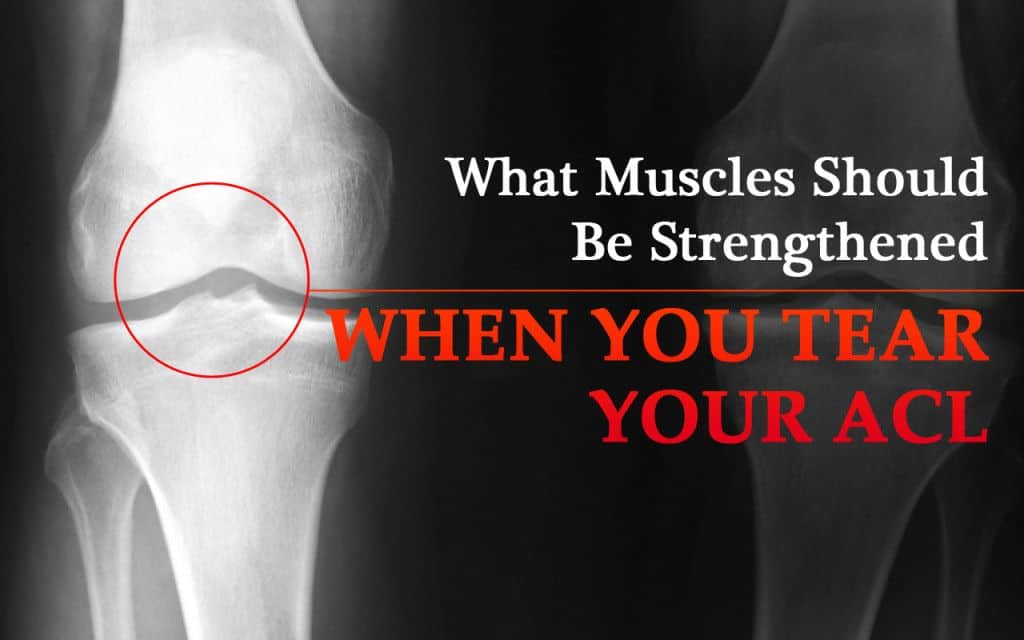
Many of us now lead healthier lifestyles, whether in terms of playing more sports and engaging in more active hobbies like dance or rock climbing or simply in terms of just walking and jogging more, or making healthier dietary choices. However, this isn’t always easy – or foolproof. There are things that can go wrong, which can get in the way of effective healthy living. The proper workings of the human body, while amazing, aren’t foolproof – a number of possible issues can come up that can gum up the works of the otherwise smooth mechanisms that characterize the human body. Torn ACL recovery may be the furthest notion from your mind, until injury occurs.
For example, our joints are among the most fascinating engineering marvels ever – the bones that give our body structure are attached to muscles with ligaments and tendons, and when the muscles contract and flex, this facilitates movement. Layers of cartilage keep the bones from rubbing against each other and causing friction. This interesting interplay of parts becomes even more admirable when one realizes that joints with this construction are intended to carry one’s weight through a variety of physical activities.
One of the problems that we can have with our joints is the ACL injury. The ACL is the anterior cruciate ligament is one of the ligaments that connect the upper and lower leg bones, keeping the bone stable. There are many types of ACL injuries; these can range from small tears to full tears of the ligament or where the ligament separates from the bone. Given that the ACL is intended to stabilize the bone, ACL tears will result in abnormal bone movement that has the bones potentially rubbing against each other and the cartilage also seeing damage. ACL tears tend to occur when the knee bends side to side, gets twisted, or is bent backward. Torn ACL recovery is then imperative to restoring mobility.
This can happen in a number of contexts, including something as simple as landing on it wrong or pushing off of it wrong. For example, in sports, when you plant your foot and suddenly change direction, the ACL can sustain damage. This is fairly common in a lot of sports, including soccer and football and basketball. Of course, this can even happen in other environments, such as falling off a ladder or missing a step on the stairs. When it happens you may hear a loud pop, and swelling will likely occur within the first few hours. The pain and swelling will limit your further movement.
Various treatments are often in order for those suffering an ACL injury – you will need x-rays to determine the extent of the damage, or perhaps even an MRI that will be more thorough in doing the job. First aid for an ACL injury will involve rest, ice, compression and elevation, which are standard treatments for most joint injuries that involve inflammation. The rest is essential because to stress the joint more would just compound all the issues already present in it, while the ice and compression serve the purpose of keeping the inflammation down. Elevation helps ease the blood flow to the affected area, which in turn can help keep the situation from getting worse.
After you are able to regain your range of motion following the ACL injury, it’s very important that you strengthen the muscles surrounding the knee in order to reinforce their ability to take stress away from the knee itself. While others might suggest strengthening the knee joint itself, exercising the knee could bring about stress that might bring the injury back or make it easy for this to happen down the line. Stick to developing the surrounding muscles instead so they can do all the work.
1. Quadriceps
Your quads are the muscles running along the thigh at the front. Strengthening your quads can be a good place to start. This is a good exercise: lie on your back, with the heel of the target leg on a book or block or other short but raised surface. With that leg extended fully, tighten the quad muscles but don’t lift the leg. Hold this for 10 seconds, then relax for 10 seconds. Do this for 10 reps.
2. Hamstrings
Another large muscle group that could use working out after an ACL injury is the hamstrings. Get some elastic tubing and tie the ends into knots. Place the knotted end behind a door, then secure the knotted end by closing the door. Sit in a chair facing toward the wall, and loop the tubing around your heel. Use your hamstring muscle to pull your heel and the tubing toward you. Hold this for 10 seconds and slowly release. Do five reps.
3. Both
Doctors often recommend a subsequent exercise that develops both of these muscles after your recovery has begun. Squats are a good way to target both the hamstrings and quads, along with your glutes. Whenever you do squats, you should begin with your feet hip width apart and your chest straight. Make sure not to change either through the entire exercise. Engage your core when you squat, and keep the knees aligned as well.
Further strengthening can be done after you recover fully. Walking lunges are one good way to do this; start by standing with feet together and then step forward with the left foot, letting your heel touch the ground first. Lower your weight onto that leg and foot slowly and bend the knee until your left thigh is parallel to the ground. Avoid having the knee go further forward than the shinbone. Follow with the right leg, then the left again. This exercise, if done after recovery is complete, will help build strength that could prevent later ACL injury.
For more information on our Copper Infused Knee Sleeve, Click Here!